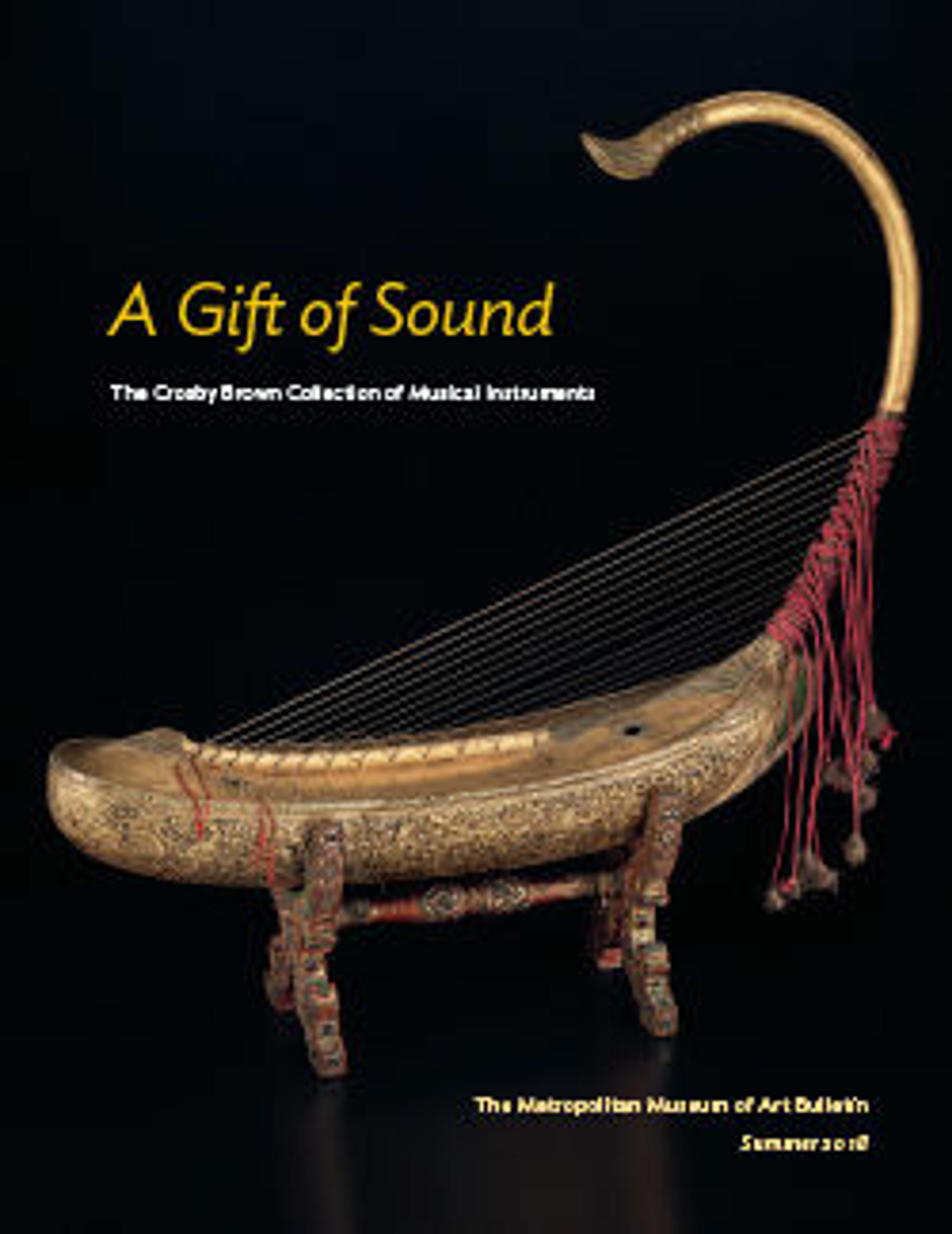Banjo
Hercules McCord, a banjo maker from St. Louis, MO, produced this banjo in 1884. The neck design is conventional. However, the rim assembly, which incorporates three of McCord’s four patent innovations, ingeniously addresses several technical challenges related to rim design and head tightening assemblies.
The 1880s saw major innovations in banjo design and technology. 75 patents related to banjos were registered with the U. S. Patent Office during that decade. Many of these patents focused on either the mechanisms used to tighten the skin head or the design of the banjo rim itself. One challenge was to minimize the work it took to tighten the head. The second addressed the design and location of the tightening mechanisms to minimize the likelihood of causing discomfort to the player. This often was accomplished by either enclosing the mechanisms in a specially designed rim or designing the mechanisms as an integral part of the rim.
McCord’s all-metal rim design deals with these technical challenges. The back of the bowl-shaped rim consists of 24 spokes radiating from the center. Cables are enclosed in each of the spokes and are attached to the metal band that tightens the skin head over the rim. The tension of each of the 24 cables is regulated simultaneously by a single screw mechanism at the center of the back of the rim. McCord’s design dispenses entirely with multiple head tightening mechanisms that have to be tightened individually and are often protruding from the exterior of the rim, which can be uncomfortable for the player. In spite of the elegant ingenuity of the design, this banjo is the only known example incorporating McCord’s spoked cable head-tightening system. (Peter Szego, 2020)
The 1880s saw major innovations in banjo design and technology. 75 patents related to banjos were registered with the U. S. Patent Office during that decade. Many of these patents focused on either the mechanisms used to tighten the skin head or the design of the banjo rim itself. One challenge was to minimize the work it took to tighten the head. The second addressed the design and location of the tightening mechanisms to minimize the likelihood of causing discomfort to the player. This often was accomplished by either enclosing the mechanisms in a specially designed rim or designing the mechanisms as an integral part of the rim.
McCord’s all-metal rim design deals with these technical challenges. The back of the bowl-shaped rim consists of 24 spokes radiating from the center. Cables are enclosed in each of the spokes and are attached to the metal band that tightens the skin head over the rim. The tension of each of the 24 cables is regulated simultaneously by a single screw mechanism at the center of the back of the rim. McCord’s design dispenses entirely with multiple head tightening mechanisms that have to be tightened individually and are often protruding from the exterior of the rim, which can be uncomfortable for the player. In spite of the elegant ingenuity of the design, this banjo is the only known example incorporating McCord’s spoked cable head-tightening system. (Peter Szego, 2020)
Artwork Details
- Title: Banjo
- Maker: Hercules McCord (American, St. Louis 1855–1890 St. Louis)
- Date: ca. 1884
- Culture: American U.S.A.
- Medium: Metal, parchment
- Dimensions: L. 36 x Head Diam. 11 7/16 in. (91.5 x 29 cm)
String Length: Longest 30 1/8 in. (76.5 cm); Shortest 22 5/8 in. (57.5 cm) - Classification: Chordophone-Lute-plucked
- Credit Line: The Crosby Brown Collection of Musical Instruments, 1889
- Object Number: 89.4.2677
- Curatorial Department: Musical Instruments
More Artwork
Research Resources
The Met provides unparalleled resources for research and welcomes an international community of students and scholars. The Met's Open Access API is where creators and researchers can connect to the The Met collection. Open Access data and public domain images are available for unrestricted commercial and noncommercial use without permission or fee.
To request images under copyright and other restrictions, please use this Image Request form.
Feedback
We continue to research and examine historical and cultural context for objects in The Met collection. If you have comments or questions about this object record, please complete and submit this form. The Museum looks forward to receiving your comments.
